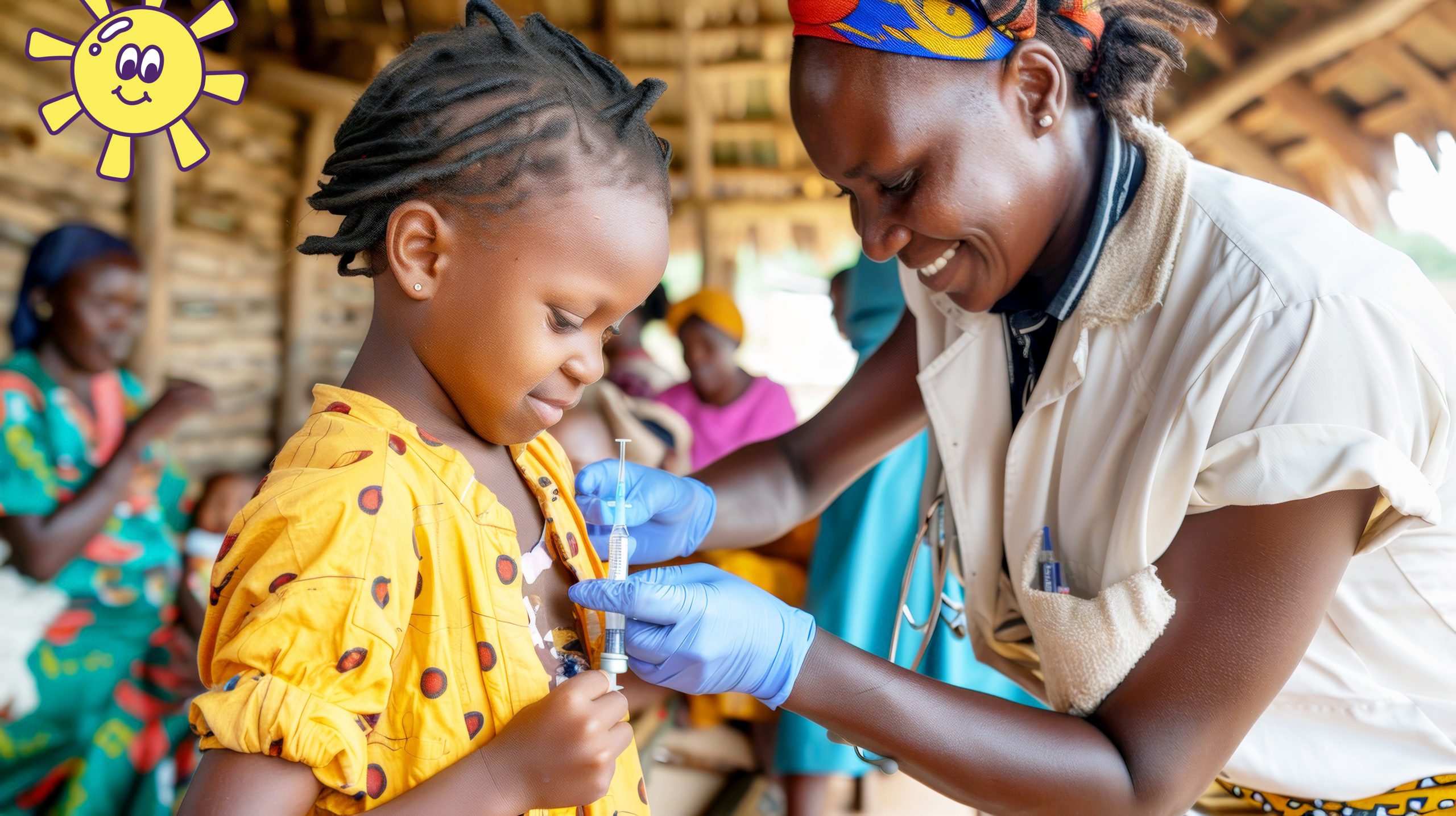Understanding Yellow fever
Explore this health file to better understand Yellow fever in Africa: its causes,
its symptoms but also the means of prevention and treatment.

Posted on
I. Definition and key figures
Yellow fever is an acute viral disease spread by the bite of an infected mosquito of the genus Aedes. The disease is mainly rife in the intertropical regions of South America and Africa.
The term “yellow” refers to jaundice, a characteristic symptom presented by some patients with this disease. [1]
In 2022, twelve countries in the WHO African Region reported confirmed cases of yellow fever: Cameroon, Central African Republic, Chad, Côte d’Ivoire, Democratic Republic of Congo, Ghana, Kenya, Niger, Nigeria, Sierra Leone and Uganda. Transmission of the disease has continued since 2021 in eight of these countries, namely Cameroon, Central African Republic, Chad, Democratic Republic of Congo, Côte d’Ivoire, Republic of Congo, Ghana and Nigeria. [2]
Key figures :
- Every year, according to the WHO, there are an estimated 200,000 cases of yellow fever and around 30,000 deaths worldwide due to this disease. [3]
- According to the WHO, in 2023, yellow fever is endemic in all or parts of 34 countries in Africa, as well as in 13 countries in Central and South America. [4]
- Africa is the continent most affected by yellow fever, accounting for 95% of cases worldwide [3].
II. Causes
The yellow fever virus is transmitted to humans by the bite of mosquitoes of types Aedes and Haemagogus, which are vectors of the amaril virus [1,3].
The main targets of the virus are humans and monkeys. Humans can be infected in several ways [1]:
- Through bites from infected wild mosquitoes, during a stay in the forest (“selvatic” cycle). This transmission is particularly widespread in Latin America and African forests.
- Through the bites of domestic mosquitoes (Aedes aegypti), following the introduction of the virus into urban areas from rural areas (“urban” cycle), responsible for major epidemics.
- By bites from semi-domestic mosquitoes that infect both humans and monkeys (“intermediate” cycle), most common in Africa’s savannah zones.
III. Symptoms
After an incubation period of 3 to 6 days, many infected people show no symptoms. However, when symptoms do appear, yellow fever generally manifests itself as fever, chills, muscle aches, headaches, loss of appetite, nausea and/or vomiting.
These symptoms may initially resemble those of influenza, dengue fever or malaria. In most cases, these symptoms disappear within 3 to 4 days. However, some cases can evolve into more serious and severe forms, with infection affecting the liver and kidneys, and consequent symptoms: abdominal pain with vomiting (of black blood in some cases), the yellowing of the eyes and skin that gives the disease its name, and liver and/or kidney failure. Bleeding may also occur from the mouth, nose, eyes or stomach. In these severe cases, the mortality rate can be as high as 20-60%, and death can occur within 7-10 days. People who recover from yellow fever develop lifelong immunity. [2,3]
IV. Prevention
Vaccination is the most effective means of preventing yellow fever. The yellow fever vaccine is safe, affordable and a single dose offers lifelong protection against the disease, with no need for a subsequent booster. [4]
Within 10 days of vaccination, the vaccine confers effective immunity in 80% to 100% of those vaccinated, and in more than 99% of those vaccinated within 30 days. [4]
The yellow fever vaccine rarely has side effects. Those excluded from vaccination are as follows: [4]
- Infants under 9 months of age.
- Pregnant women, except during outbreaks when the risk of infection is high.
- People severely allergic to egg proteins.
- People with severe immunodeficiency due to symptomatic HIV/AIDS infection or other causes, as well as people with thymus disorders.
In many countries where yellow fever is endemic, proof of yellow fever vaccination is required.
V. Treatment
At present, there is no specific treatment for yellow fever. Prevention through vaccination is therefore of crucial importance.
In the event of contracting the disease, the only measures to combat it are rest, rehydration and medication to reduce fever, vomiting and pain. It is essential to stress that preventive vaccination remains the best approach to avoid yellow fever and its potentially serious complications. [3,4]
Explore our health files by clicking here.
POI 0869-06/23
Sources :
[1] https://sante.gouv.fr/soins-et-maladies/maladies/maladies-infectieuses/la-fievre-jaune
[2] https://www.who.int/fr/emergencies/disease-outbreak-news/item/2022-DON431
[3] https://www.pasteur.fr/fr/centre-medical/fiches-maladies/fievre-jaune
[4] https://www.who.int/fr/news-room/fact-sheets/detail/yellow-fever

